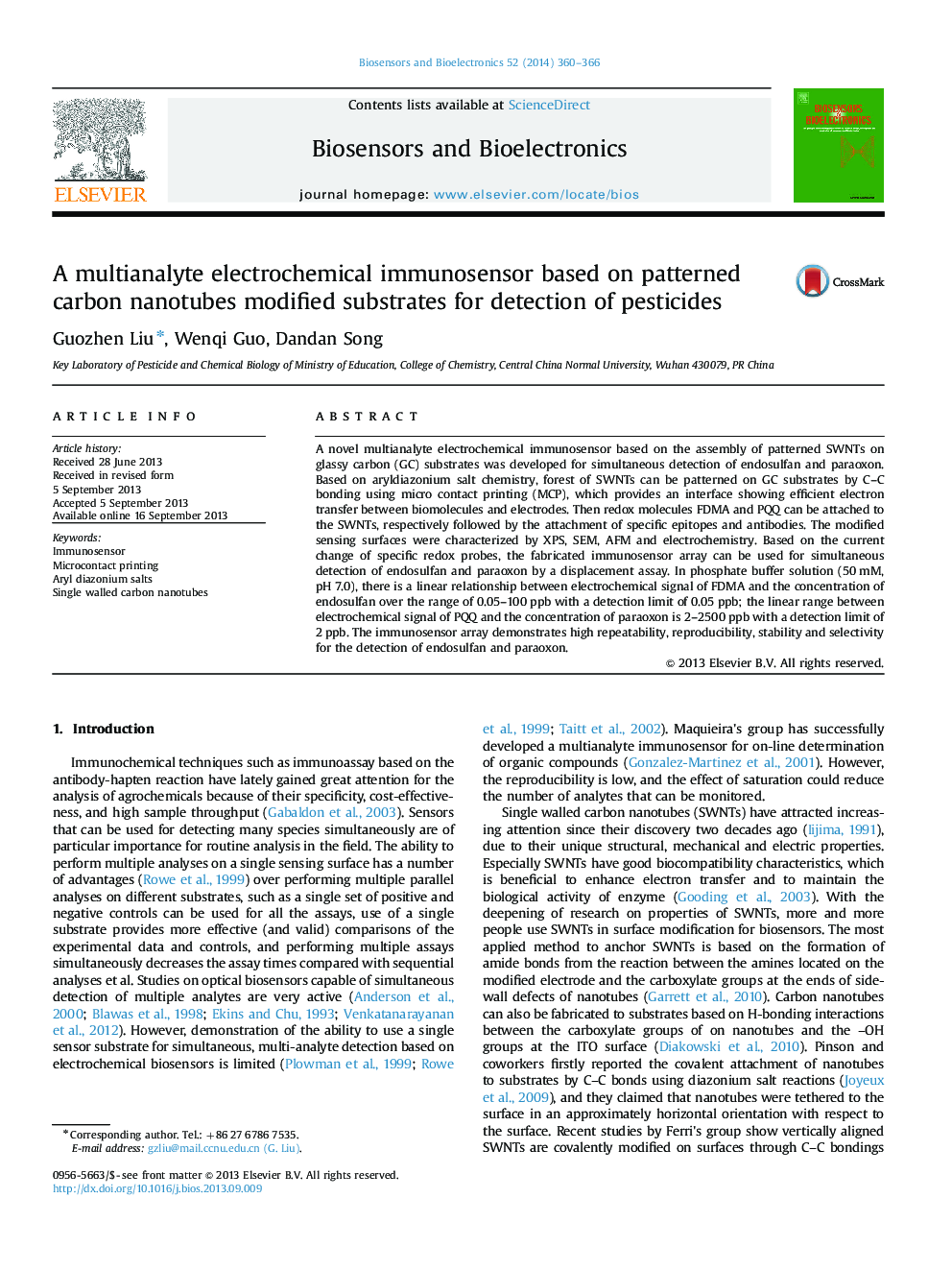| کد مقاله | کد نشریه | سال انتشار | مقاله انگلیسی | نسخه تمام متن |
|---|---|---|---|---|
| 866792 | 1470979 | 2014 | 7 صفحه PDF | دانلود رایگان |
• A novel multianalyte electrochemical immunosensor based on the assembly of patterned SWNTs on GC substrates is presented.
• Forest of SWNTs can be patterned on GC substrates by C3C bonding using micro contact printing (MCP).
• The fabricated immunosensor can be used for simultaneous detection of endosulfan and paraoxon with high sensitivity.
• The fabricated immunosensor array demonstrates high repeatability, reproducibility, stability and selectivity towards the pesticides detection.
A novel multianalyte electrochemical immunosensor based on the assembly of patterned SWNTs on glassy carbon (GC) substrates was developed for simultaneous detection of endosulfan and paraoxon. Based on aryldiazonium salt chemistry, forest of SWNTs can be patterned on GC substrates by C3C bonding using micro contact printing (MCP), which provides an interface showing efficient electron transfer between biomolecules and electrodes. Then redox molecules FDMA and PQQ can be attached to the SWNTs, respectively followed by the attachment of specific epitopes and antibodies. The modified sensing surfaces were characterized by XPS, SEM, AFM and electrochemistry. Based on the current change of specific redox probes, the fabricated immunosensor array can be used for simultaneous detection of endosulfan and paraoxon by a displacement assay. In phosphate buffer solution (50 mM, pH 7.0), there is a linear relationship between electrochemical signal of FDMA and the concentration of endosulfan over the range of 0.05–100 ppb with a detection limit of 0.05 ppb; the linear range between electrochemical signal of PQQ and the concentration of paraoxon is 2–2500 ppb with a detection limit of 2 ppb. The immunosensor array demonstrates high repeatability, reproducibility, stability and selectivity for the detection of endosulfan and paraoxon.
Journal: Biosensors and Bioelectronics - Volume 52, 15 February 2014, Pages 360–366
